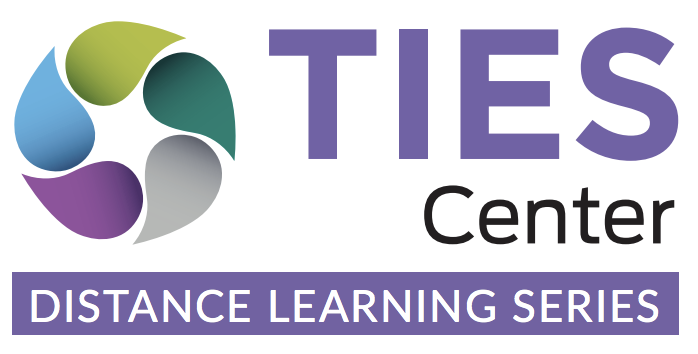Building Engagement with Distance Learning
DL #1: Morning Meetings

One of the most important ways to help students feel safer and more in control is to build schedules and routines they can count on. Many elementary classrooms use morning meetings to check-in with students and lay out the goals of the day. Even with asynchronous distance learning or packets of work that go home, this is still possible.
For distance learning using internet tools, there are multiple ways to create a morning meeting video/welcome. Some possible ways to record and share information: SeeSaw, Google Classroom, Schoology, Blackboard, Canvas, Fligrid, Padlet, or a private Youtube channel. Flipgrid, Youtube, Padlet and some of Google Classroom do not require a paid account so it may be helpful if your district/school does not already have a platform. If you are looking for ways to move online with your classroom meetings, check out Ceedar Center’s Virtual Tool kit for moving to online learning.
Sometimes low tech is the way to go. A morning meeting can be done through a morning email, a shared notebook (virtual or not), a daily warm-up routine, and/or a simple check-in phone call.
Access Considerations
Use closed captions. If your recording system does not have that, type out a script (or close approximation) for what you are saying. Youtube closed captioning guide . PowerPoint closed captioning guide . Tech Republic has a list of Five Speech Recognition Apps that may help closed caption audio/video files.
Color is awesome but black and white may be better for accessibility. Use contrasting colors if necessary. You can use the AEM Accessibility Guide to help you check if the colors you are choosing are accessible.
Keep your graphics uncluttered. Keep text to a minimum.
Specialized supports for students with IEPs
For students with IEPs, you want to keep the morning message as similar to the rest of the class’s as possible. However, an introductory note with accessibility ideas for families on how to help their child be a more active part of the morning meeting. Basic ideas such as including more visuals, supporting parents on using a core board or other AAC, or ensuring audio is available can be good reminders for families.
For students with the most significant cognitive disabilities
Here are two examples: one high tech and one low tech. All of the examples could be aligned with a core board and keywords.
Notice that both examples include similar pieces:
- An accessible greeting, using text, audio (when applicable), and AAC symbols or structure for modeling.
- A short personal message from the teacher welcoming the students to class.
- An accessible way for students to check-in.
- An outline of what academics students will be doing today.
Example: High technology
To start today, please go to Padlet and tell the class one thing you have learned in the past week .
Example: Low technology
Elementary school example
Good morning friends! I miss you!
Today, make or take a picture for your friend. Send it with your packet.
Make one choice from each area. There are a few options in each subject area.
ELA---we will share your favorite parts of a story.
Math---we are learning about fractions.
Science--we are going on a scavenger hunt.
Social studies--we are reading about community heroes.
Other--choose from the art, music, or movement choices.
Have a good day!
--Ms. Taub
Middle School example
Good morning students,
I miss seeing your smiling faces each day. And your eyes rolling as I give you homework :). Today’s warm up:
Email, phone, text, or send a letter to your assigned classmates telling them one thing you learned last week. Or, you can return it with your completed packet and I will make sure the student receives it.
Today, you will complete pages 4-7 in your packet. If you have any problems or questions, you may email me, call the school homework hotline, or call/text your friends to get help.
Have a great week!
-Ms. Taub
Done! Take a deep breath and remember to give yourself the freedom to make mistakes and experiment. There is no one way to do this.
You did it! Great job.
Disclaimer: The information in this Brief is not an endorsement of any identified products. Products identified in this Brief are shared solely as examples to help communicate information about ways to reach the desired goals for students.
Distance Learning Series: DL #1, April, 2020
All rights reserved. Any or all portions of this document may be reproduced without prior permission, provided the source is cited as:
- Taub, D. (2020). Morning meetings (DL #1). TIES Center.
TIES Center is supported through a cooperative agreement between the University of Minnesota and the Research to Practice Division, Office of Special Education Programs, U.S. Department of Education (# H326Y170004). The Center is affiliated with the National Center on Educational Outcomes (NCEO) which is affiliated with the Institute on Community Integration (ICI) at the College of Education and Human Development, University of Minnesota. The contents of this report were developed under the Cooperative Agreement from the U.S. Department of Education, but do not necessarily represent the policy or opinions of the U.S. Department of Education or Offices within it. Readers should not assume endorsement by the federal government. Project Officer: Susan Weigert
The National Center on Educational Outcomes (NCEO) leads the TIES Center partnership. Collaborating partners are: Arizona Department of Education, CAST, University of Cincinnati, University of Kentucky, University of North-Carolina–Charlotte, and the University of North Carolina–Greensboro.
TIES Center
University of Minnesota
Institute on Community Integration
2025 East River Parkway
Minneapolis, MN 55414
Phone: 612-626-1530
This document is available in alternate formats upon request.
The University of Minnesota is an equal opportunity employer and educator.
